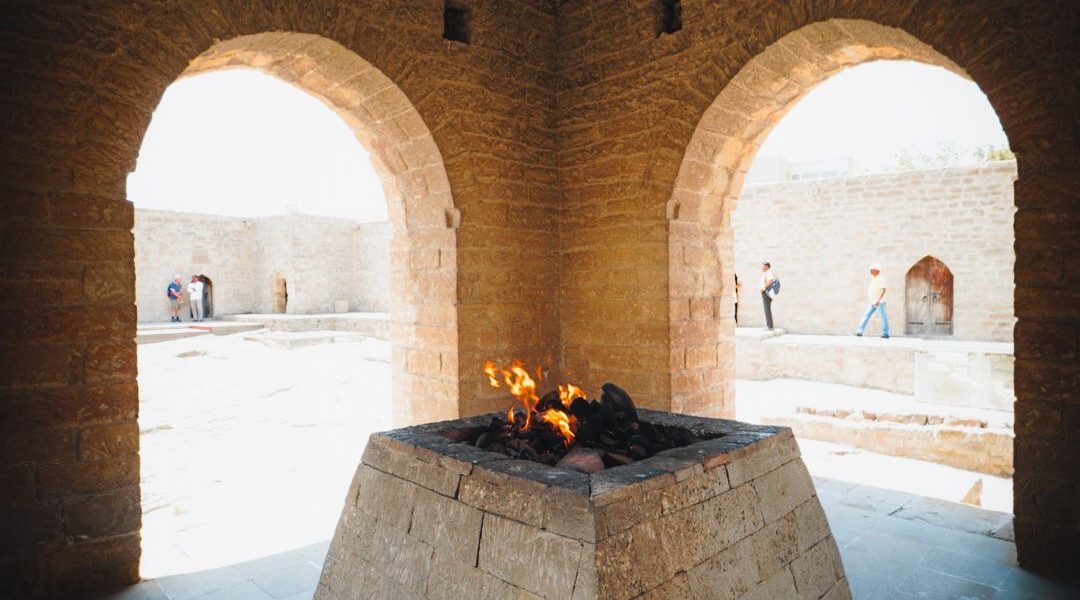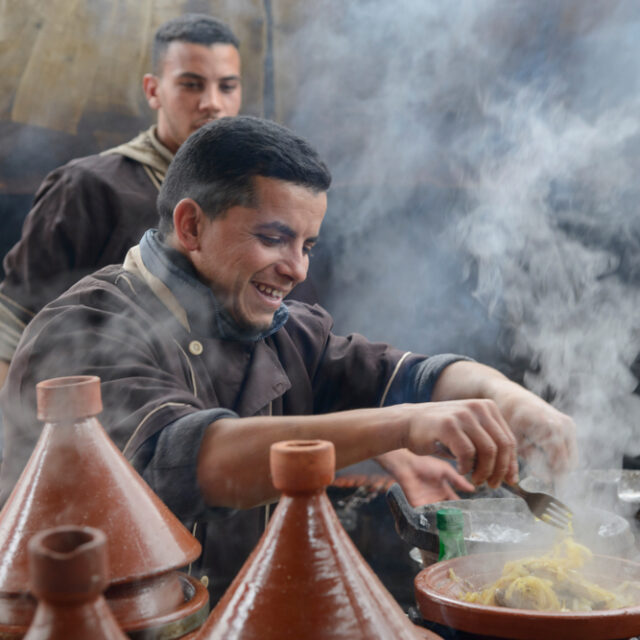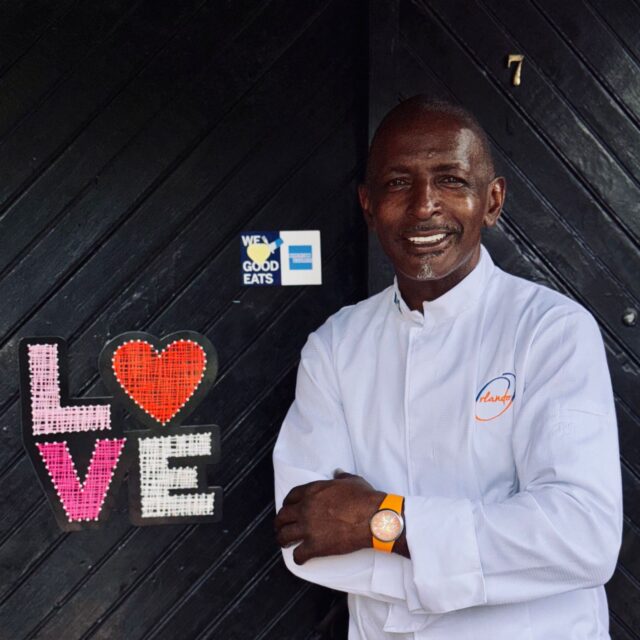When thinking of Azerbaijan, many people may just imagine F1 drivers speeding around the streets of its capital. The annual F1 Grand Prix has been hosted by Baku since 2017, with the likes of Lewis Hamilton and Max Verstappen having become familiar features on the city’s streets each year.
The country however has so much more to offer. There really is much more to the “Land of Fire” than car racing and, while tourism is still in its relative infancy here, Azerbaijan hopes to become more of a real visitor destination in the coming years.
Actually, some may recall that, culturally, the country really thrust itself onto the international stage when it was chosen to host the Eurovision song contest back in 2012 after Ell and Nikki triumphed the previous year with “Running Scared”. The country spent an estimated €160 million on hosting the 2012 contest, including building a completely new arena for the event, now one of the standout landmarks you can see from Highland Park, which makes for a good starting point of any tour of the city.
From an enviable position atop a steep climb it affords quite marvellous panoramic views of the whole of Baku, which is the country’s commercial hub and, in fact, comprises 32 “villages” and as well as about 6m of the country’s 10m population.

Here you can see in at least some of its beauty the Caspian Sea, which is not actually a sea but a huge, salty, lake. It is also home to not just natural gas on which the country’s booming economy is still based, but sturgeon (the roe from the Almas sturgeon, the albino Beluga sturgeon, is the most exclusive type of caviar in the world).
The park also showcases Martyr’s Lane and a monument where a flame (powered by natural gas, what else?) has been burning 24-7 since it opened in 1997.
Another city highlight is its wonderfully preserved old town, containing the Maiden Tower, a 12th century monument. It’s part of a group of historic monuments which are listed under the UNESCO World Heritage List of Historical Monuments as cultural property.
The walled old town, or “inner city”, was built for defence purposes and includes 28 streets, 32 places of historical interest such as the Palace of Shirvanshahs, described as a “pearl” of the city’s heritage, plus a fascinating miniature book museum – and is also home to about 2,000 people.
Just outside the city you will encounter another very much “must see” attraction of any visit to this country: the burning fires at Yanardag. This is a remarkable natural gas fire which blazes continuously on a hillside on the Absheron Peninsula. This unique phenomenon has been attracting visitors for centuries. The natural gas deposit has been burning for at least 700 years with records dating to the 13th century. The flames can reach heights of 10-15 metres and don’t forget to drop a coin or two into the fire – this is said to bring you luck.
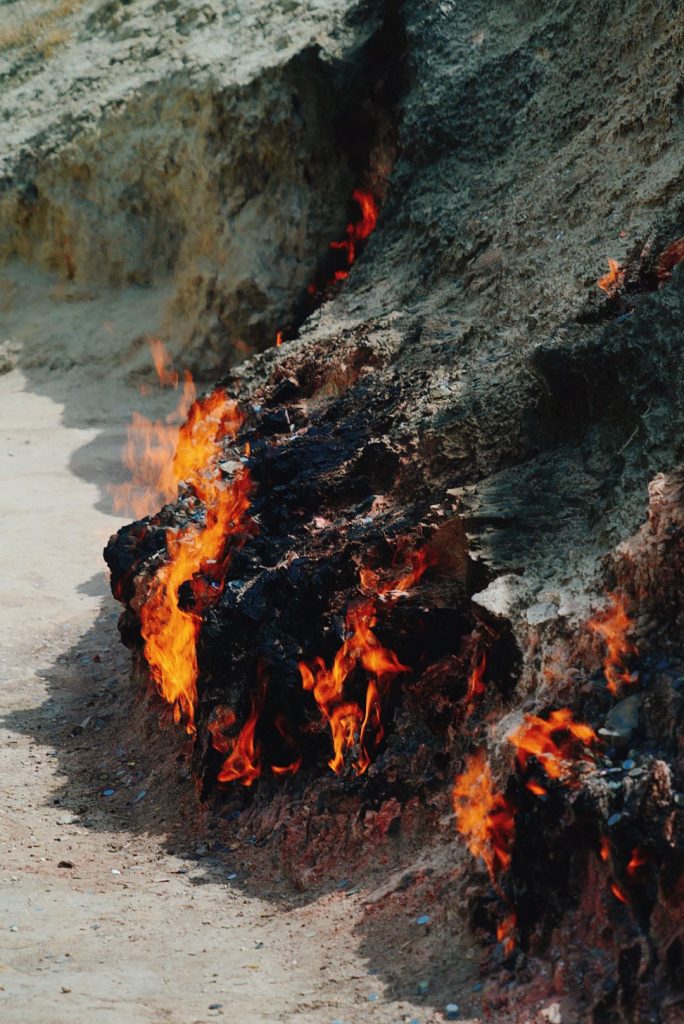
Close by and well worth a visit is the Ateshgah Fire Temple where, yes, you’ll find yet another example of this country’s symbol – fire and flames. The temple was built in the 17th-18th centuries on the site of unquenchable flames with a natural gas outlet.
The temple was once the site of a number of religious rituals including acts of self-punishment such as lying on a bed of hot bricks and/or standing totally still, not moving for hours with a 34kg chain around your neck. Fortunately, no such acts take place anymore and the whole site, newly restored in 2013, is once more attracting visitors, as it once did the great French author Alexandre Dumas.
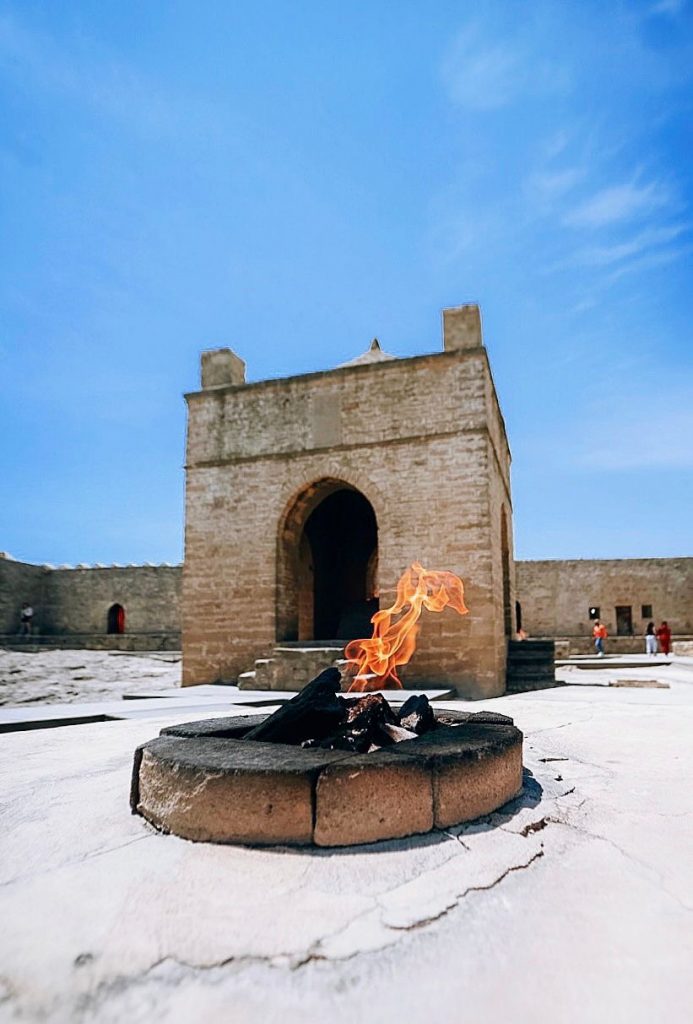
It was back in 1858 that Alexandre Dumas visited the Caucasus. On his nine-month journey through the region, one of the places that captured his imagination most was the fire temple located on the outskirts of Baku. Dumas challenged his fellow Frenchmen not to delay in visiting this incredible site. How correct he was.
The highlights of any visit to this country must be its natural wonders and, like the flaming mountainside, another box that must be ticked are the mud volcanoes. Mud volcanoes appeared in Azerbaijan due to tectonic movement allowing subterranean gases to escape to the surface.
On the way, and not far out of the sprawling city metropolis, you will pass through an endless moon-like landscape that seems to extend forever. On arrival you cannot help but be intrigued by the bizarre sight that greets you: these messy, bubbling and sometimes explosive mud volcanoes. You may, in fact, soon have the chance to stay on site as a spa-type hotel is currently being constructed just a few metres from the mud volcanoes (end of 2025 is the hoped-for opening).
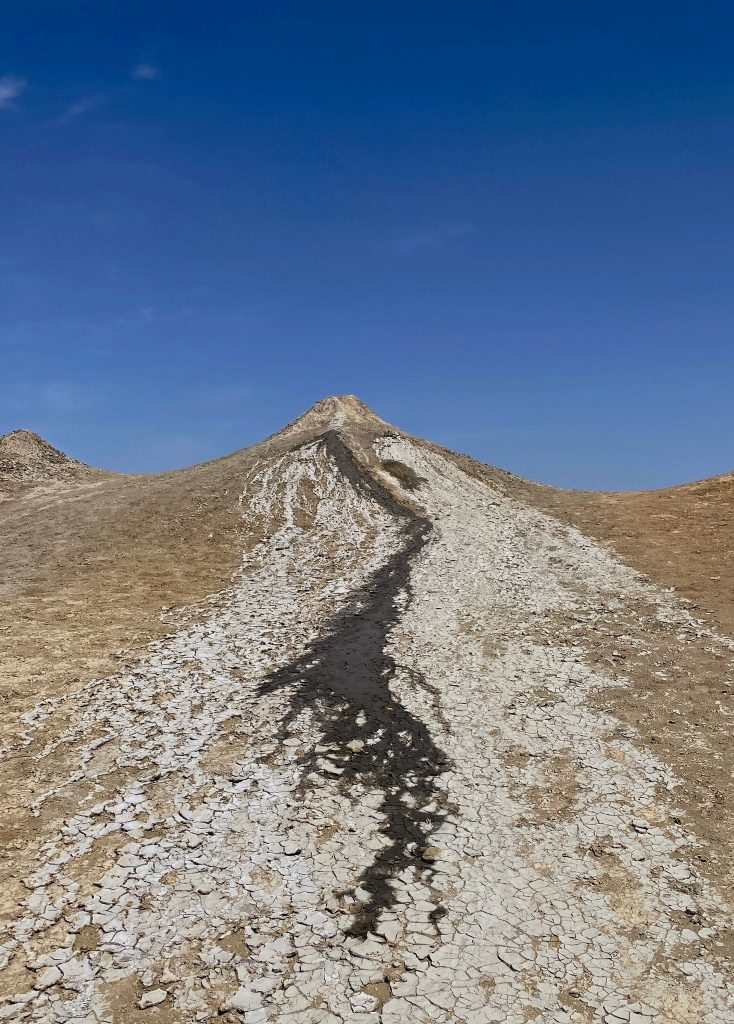
Yet further examples of this country’s natural beauty can be found, quite close by, at the Gobustan Reserve. This is a state historical and cultural reserve, located about 65km from Baku and home to some impressive prehistoric rock carvings. Excavation on the site began just before WW2 and continues to this day (the skeleton of a child, estimated to be aged 4-8, was recently uncovered in the rocks).
Azerbaijan is about 3,500km from Belgium and takes about 8 hours to fly to so, time permitting, any visit here should include at least one excursion into the hinterland of this former Soviet Union country. If so, one great day trip (en route you can see snow-capped mountains in the distance) is to the Sheki Palace, a former summer residence for the Sheki Khans, built in 1797 by Muhammad Husayn Khan Mushtaq.
Described as the country’s “most outstanding and valuable monument from the 18th century” it contains richly colourful paintings depicting hunting and war scenes and also a marvellous centre which showcases the best of Azerbaijani art and craftwork – all being conducted by small-scale businessmen and women. Look out also for the two, huge trees, said to be 2,700 years old, shadowing this impressive palace. Little wonder that the site attracts 3m visitors a year.
Back in the capital and there’s yet more to see, such as the Taza Pir Mosque, which has undergone a major refurb, boasts a huge dome and is a place of worship (up to five times per day) for a maximum of 3,000 people at any one time.

Close by is something entirely different: the Heydar Aliyev Center, named after the country’s president from October 1993 to October 2003 (Baku’s airport is also named after him). Designed by Iraqi-British architect Zaha Hadid, this huge and visually stunning building includes all manner of things, including models of the main landmarks of both the city and country, conference hall, an impressive vintage car museum and an exhibition of dolls (including one by Belgian artist Christine Polis). It could be said that if any building symbolizes the remarkable and rapid transformation this country has seen in recent years it is the Heydar Aliyev centre.
It’s probably a little-known fact that until the middle of the 20th century, this country supplied no less than half of the world’s petrol. Today, Azerbaijan appears to be a country that is in a hurry to, again, really stamp its mark on the world stage but, this time, in other ways. And that goes beyond trying to find its way back into the record books for having the tallest flagpole in the world (you can see the construction work on the Caspian Sea shoreline).
Aside from Eurovision and motor racing, the country is laying the foundations to become a genuine tourist hub as well. At present, many of the tourists who visit do so as part of a three-country package that also includes neighbouring Georgia and Albania. However, after the coronavirus outbreak (which led to lockdown here from March 2020 to September 2022), Azerbaijan’s land borders have remained closed with air travel being the only means of access.
The good news, though, is that the land borders are due to finally reopen around the middle of next month (July). That will be welcome by those in the Azerbaijan tourist trade, such as hotels, which has been hit badly by the health crisis which resulted in decreased visitor numbers. This came on top of a damaging 6.7 scale earthquake in 2013.
The country is suffering like Belgium from climate change and temperatures in August can easily top the 40 degree mark (even the locals are struggling to cope with the temperature rise) so a good time to visit is maybe the spring or autumn (be aware September-April is the rainy season).
English is widely spoken (it is the second language) but international tourists are commonplace here with Germans the most frequent (followed by Austrians, Hungarians and Australians).
Carnivore lovers, not least from Belgium, will be at home here as meat (delicious) features heavily on all menus.

